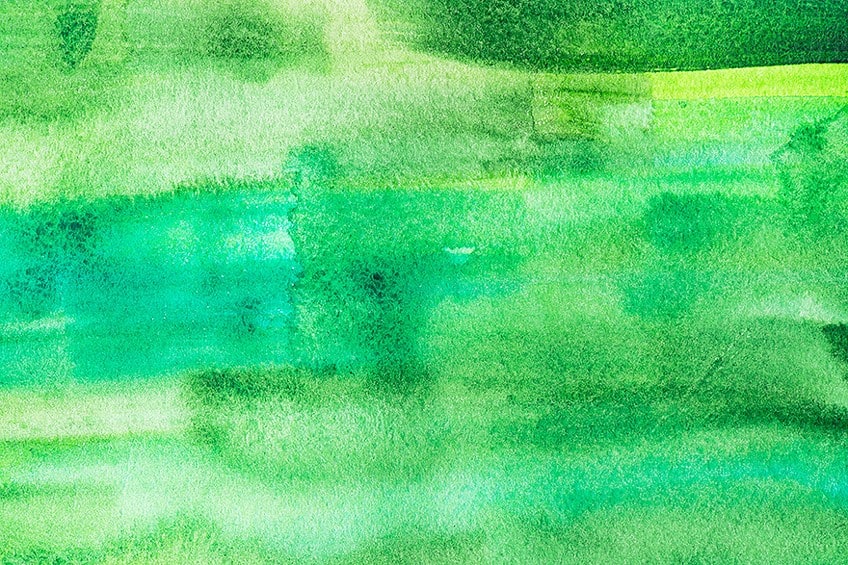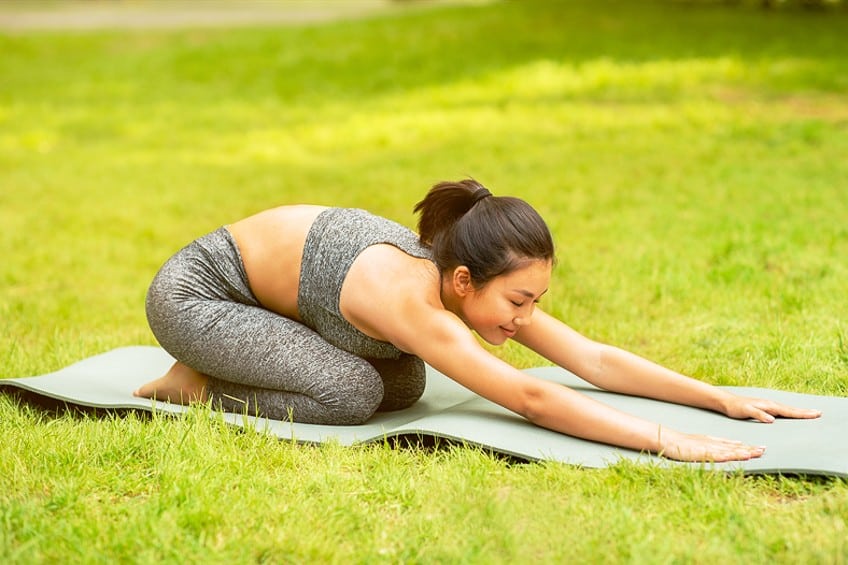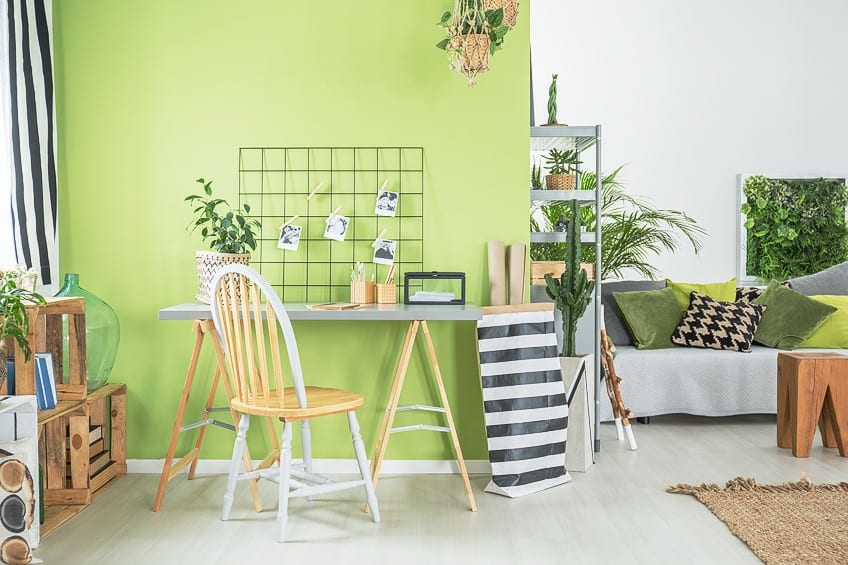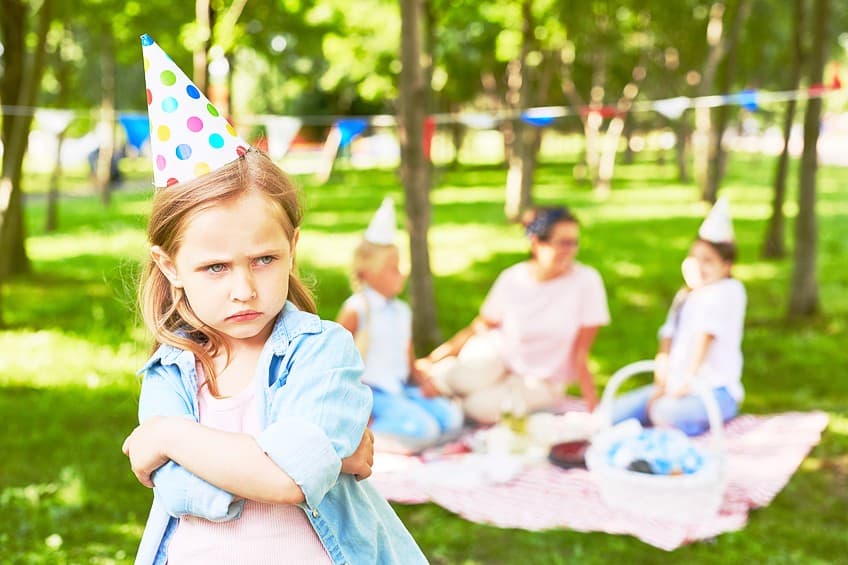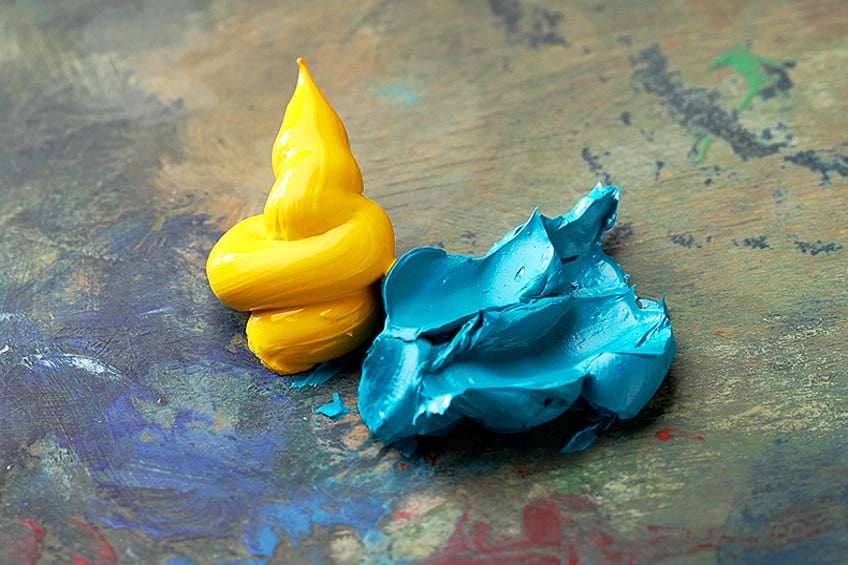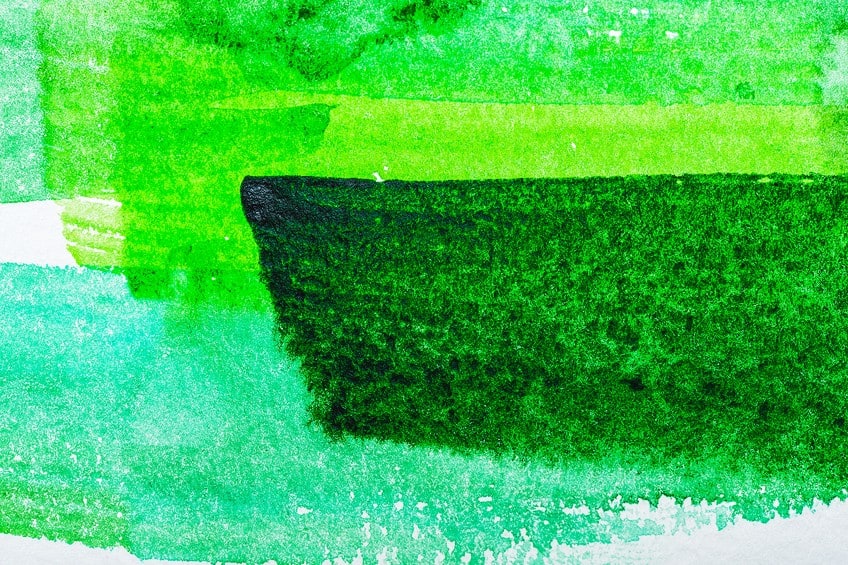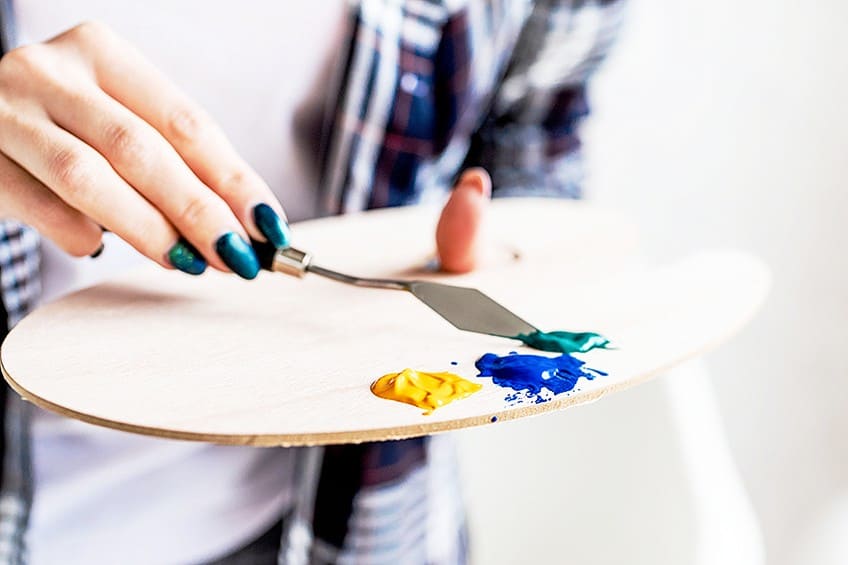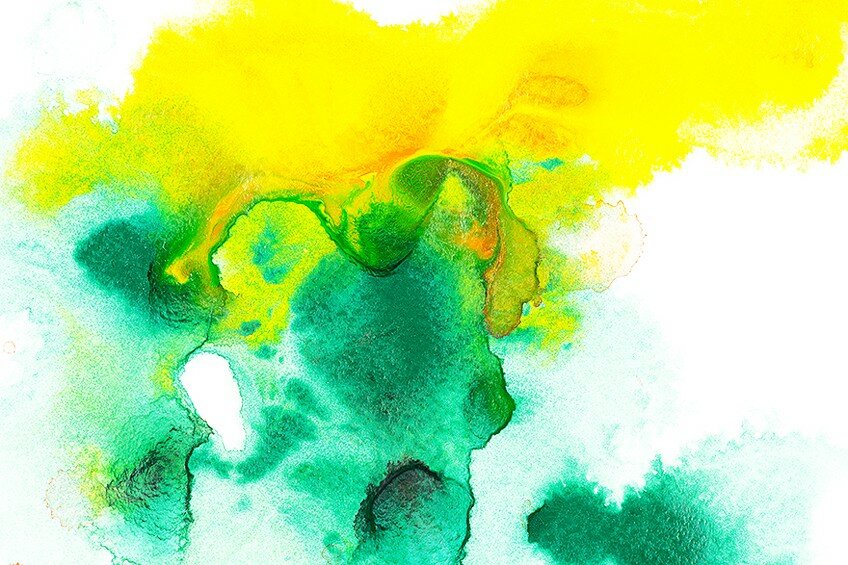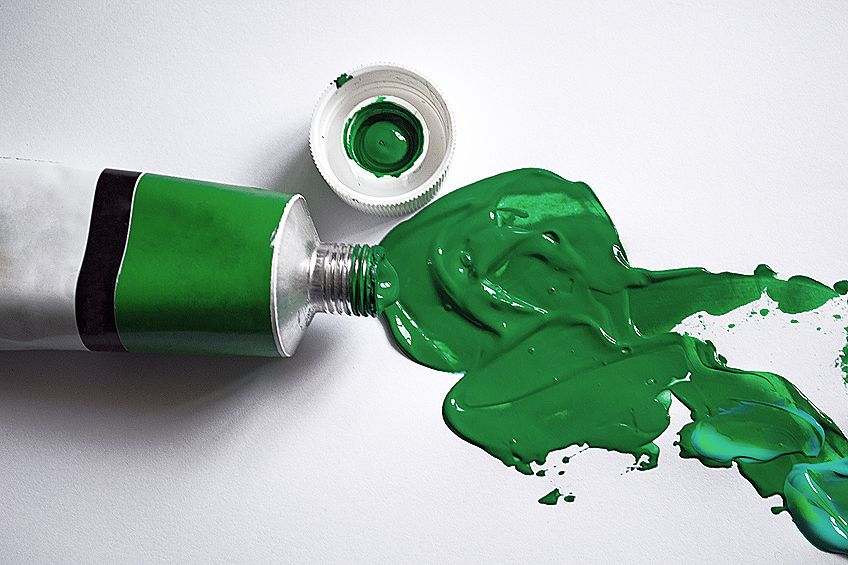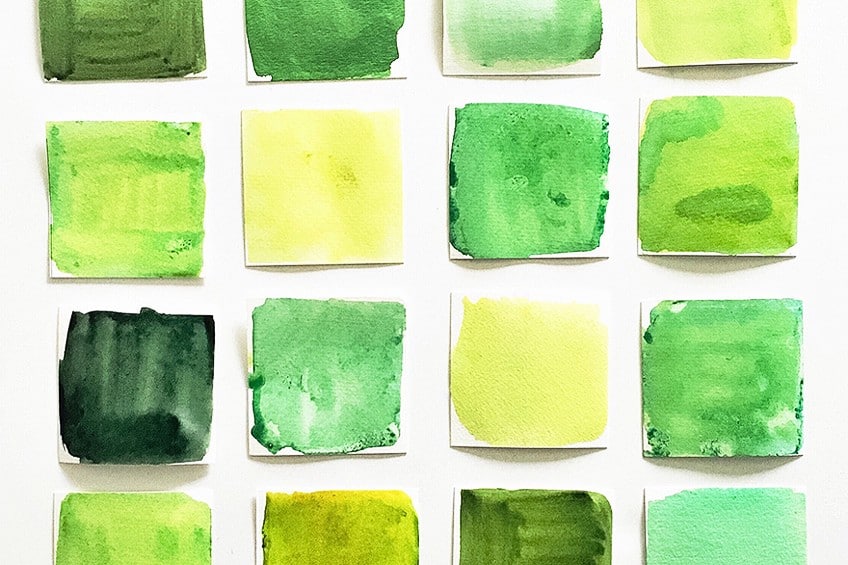What Colors Make Green? – Learn What Two Colors Make Green
Green is one of the most abundant colors in the world. It is the color of almost all photosynthesizing plants and is commonly used in advertising, media, and art to invoke a variety of responses in people. This article is all about the color green and how, as an artist, you can go about mixing green and creating various shades of green for use in your artwork. If you’re wondering what colors make lime green, what colors make mint green, or just about any other green you can think of, then this is the article you have been looking for!
Contents
- 1 Meanings and Interpretations of the Color Green
- 2 What Colors Make Green?
- 3 How to Mix Different Popular Shades of Green
- 4 Frequently Asked Questions
- 4.1 What Colors Make Light Green?
- 4.2 What Two Colors Make Dark Green?
- 4.3 Do Green and Purple Go Together?
- 4.4 What Colors Make Lime Green?
- 4.5 What Colors Make Mint Green?
- 4.6 What Two Colors Make Green?
- 4.7 How to Make Neon Green Paint?
- 4.8 How to Make Olive Green Paint?
- 4.9 Do Green and Orange Go Together?
- 4.10 How to Make Emerald Green?
- 4.11 How to Make Forest Green Paint?
Meanings and Interpretations of the Color Green
Color psychology shows that colors are known to evoke psychological reactions and can influence our moods and emotions. These reactions vary based on the shade of the color in question, and by the experiences and cultural ideas held by the person perceiving the color. This means that while green has many positive associations, it can also be viewed negatively in different contexts. In this section, we will cover a few of the common positive and negative associations of the color green.
Fertile and Calming
Green is a color that tends to put people at ease. Designers often utilize green in public spaces such as restaurants or hotels. The calming effects that green has may be explained by its association with nature. This means that most people find green to be a relaxing and refreshing color.
Spending time in green areas or even just looking at pictures of greenery in nature has been linked to alleviating stress, improving focus, lowering blood pressure, and bettering impulse control.
In the same light as being associated with nature, green is also associated with being fertile. Ancient Greeks portrayed their god of rebirth, birth, fertility, and agriculture, Osiris, with a green face. This association with green is because of its strong ties with nature.
Motivating and Encouraging
While many people find green relaxing, other people are motivated by green. Some people also associate the color green with money and prosperity. While some people may find the color green to be motivating, color preferences are highly personal and can be influenced by a wide range of factors.
For example, a person may find the color green to be calming and relaxing in one situation but energizing and motivating in another.
Research has shown that being surrounded by nature, and specifically by the color green, can have a positive impact on a person’s mood and behavior. In particular, studies have found that exposure to green environments can increase creativity and improve cognitive function.
So, while the exact impact of green on motivation may vary from person to person, there is evidence to suggest that it can have a positive effect on creativity and cognitive function.
Envious and Sickly
While the color green is often associated with positive feelings and emotions, it can also be associated with negative ones like jealousy or physical illness, such as when someone’s skin or complexion turns green. The phrase “green with envy” is a common expression that is used to describe someone who is feeling envious or resentful of someone else’s success or possessions.
What Colors Make Green?
The basic answer to the question of what colors make green is that you use equal parts blue and yellow. However, color theory is a little more complex than that, and to mix different shades of green you will have to go a bit further. This article goes into depth about what colors make green so that you can begin experimenting and creating greens with depth and tone.
What Two Colors Make Green?
To create the color green, you can mix the primary colors yellow and blue in equal proportions. This will create a green color that is bright and vivid. If you want a more muted or subdued green color, you can add more blue paint to the mix to create a darker green. Alternatively, you can add more yellow to the mix to create a lighter, more pastel-green color.
The shade of blue that you use to create green can determine the specific tone of the resulting green color.
For example, if you use a pale blue color to create green, the resulting green will be a light, pastel shade. However, if you use a dark blue color, the resulting green will be a deeper, more intense shade. Additionally, different shades of blue can create different hues of green, such as teal or turquoise. So, the specific shade of blue that you use to create green can have a significant impact on the resulting color.
In the same sense, the shade of yellow that you use to create green will determine the specific tone of the resulting green color. For example, if you use a pale yellow color to create green, the resulting green will be a light, pastel shade but if you use a dark yellow color, the resulting green will be a deeper, more intense shade.
Different shades of yellow can create different hues of green, such as olive or chartreuse.
When asked what two colors make green, the answer is that there are many different ways to create greens using different shades or varying amounts of blue or yellow, depending on the specific shade and intensity you want to achieve.
How to Add Tints and Shades to Green
Adding a tint or shade to green is a great way to start making more interesting shades and further your color-mixing abilities. The difference between shades and tints is that shades are created by mixing a color with dark colors, while tints are created by mixing a color with other light colors. This means that adding a shade to a color will make it darker and more intense while adding a tint will make it lighter and more delicate.
The specific shade or tint that you create will depend on the proportions that you use. By experimenting with different proportions, you can create a wide range of shades and tints for any green.
You might want to tint a green shade if you want to create a lighter version of a particular green color. For example, you might use a green shade as the base color for a painting, and then add a tint to create variations in the color across the painting. This can help create a sense of depth and dimension in the artwork. Additionally, tinting a green shade can be used to create a more subdued or calming atmosphere in a space.
To add a tint to green paint, you can mix the green paint with a small amount of lighter paint such as white. This will lighten the green color and create a softer, more delicate shade. The amount of white paint that you add will determine the intensity of the tint. For a very light tint, you can add a small amount of white paint, while for a more pronounced tint, you can add a larger amount of white paint.
You can also experiment with different proportions of green and white paint to create the specific tint that you are looking for. Additionally, you can try adding a small amount of another color, such as light blue or yellow, to the green mixture to create a more complex or nuanced tint. You could even add a small amount of red to create a green color with a slight reddish tint.
Overall, adding a tint to green paint is a simple matter of mixing the green paint with lighter colors in the desired proportions.
There are several reasons why someone might want to use darker shades of green in their work. One reason is that darker greens can create a sense of depth or dimension in a painting or drawing, which can be especially useful for creating the illusion of three-dimensional space on a two-dimensional surface. Darker greens can also add contrast and visual interest to a composition and can be used to create a mood or atmosphere. Additionally, darker greens can be used to create a sense of shadow or shading, which can add realism and depth to a piece of art.
To add a shade to green paint, you can mix the green paint with a small amount of darker paint. This will darken the green color and create a deeper, richer shade. You could use black or dark shades of blue, red, or yellow to add a shade to a green. The amount of dark paint that you add will determine the intensity of the shade.
For a very dark shade, you can add a large amount of paint, while for a more subtle shade, you can add a smaller amount of paint. You can also experiment to create the specific shade that you are looking for.
Overall, adding a shade or tint to green paint is a simple matter of mixing the green paint with darker or lighter paint in the desired proportions. There are many different reasons why you might want to tint or shade green, depending on the specific look or effect that you are trying to achieve. This section should allow you to know what colors make light green and what two colors make dark green.
How to Alter the Temperature of Green
The temperature of colors can have a big impact on the overall look and feel of a painting, and it can be especially important when it comes to mixing greens. In a landscape painting, for example, using cool greens can create a sense of a cold, wintery scene, while using warm greens can create a sense of a warm, sunny landscape. By paying attention to the temperature of the colors that you are using, you can help to create a more realistic and immersive scene for the viewer.
Additionally, using different temperatures of greens can also add visual interest and contrast to a composition.
Warm tints, such as red, orange, and yellow, tend to advance toward the viewer and can create a sense of movement and energy in a composition. This can be especially effective for creating a sense of depth and dimension in a painting when added to green. Cool tints, such as blue, green, and purple, tend to recede away from the viewer and can create a sense of calmness and tranquility in a composition when added to green. This can be especially effective for creating a sense of distance or atmosphere in a painting.
The amount of color that you mix with the green will determine how much the temperature of the green is altered. You can experiment with different proportions of the mixed colors to achieve the desired effect.
How to Avoid Mixing a Dull Green
To avoid mixing brown paint when trying to create the color green, it is important to use the correct proportions of yellow and blue paint. As I mentioned earlier, green is created by mixing the primary colors yellow and blue together in equal proportions. If you use too much blue or too little yellow, the resulting color may be closer to a dull or muddy brown instead of a vibrant green.
To avoid this, make sure to carefully measure the amount of yellow and blue paint that you are using, and mix them in equal proportions.
You can also try using a lighter or brighter shade of yellow, as well as a purer or more saturated shade of blue, to help create a cleaner, more vibrant green color. Additionally, you can experiment with different proportions of yellow and blue to see which combinations create the green color that you are looking for.
Using a lighter or brighter shade of yellow, as well as a purer or more saturated shade of blue, can help create a cleaner, more vibrant green color because these colors are more intense and less likely to produce dull or muddy tones when mixed. Lighter shades of yellow tend to have less brown or gray in them, which can help prevent the green color from turning dull or muddy. Similarly, more saturated shades of blue tend to have less gray or brown in them, which can also help prevent the green color from turning dull or muddy.
By using these purer, more intense shades of yellow and blue, you can create a green color that is bright, vibrant, and true to the desired shade.
How to Mix Different Popular Shades of Green
Many different shades of green can be mixed using various proportions of blue and yellow. Some examples of green shades and how they can be mixed can be seen in the list and technical color table below.
- How to make dark green: mix a larger amount of blue with a smaller amount of yellow. This will give you a deep, rich shade that is often associated with the outdoors and all things natural.
- How to make olive green paint: mix equal parts of blue and yellow, with a small amount of brown to create a muted, earthy color.
- How to make mint green: mix a small amount of blue with a larger amount of yellow and a little bit of white. This will give you a light, refreshing shade that is often associated with cleanliness and freshness.
- How to make seafoam green: mix equal parts of blue and yellow, with a little bit of white to create a light, airy color. This shade is often associated with the ocean and water.
- How to make forest green: mix a larger amount of blue with a smaller amount of yellow and a little bit of brown to create a deep, lush shade. This color is often associated with the natural world.
- How to make chartreuse: mix equal parts of blue and yellow, with a small amount of white to create a bright, vibrant color.
- How to make Kelly green: mix equal parts of blue and yellow, with a small amount of black to create a rich, bold color. This shade is often associated with strength and power.
- How to make sage green: mix a small amount of blue with a larger amount of yellow and a little bit of white to create a soft, muted color. This shade is often associated with wisdom and calm.
- How to make teal: mix equal parts of blue and yellow, with a small amount of black to create a rich, deep color.
- How to make emerald green: to create an emerald green, you can mix a small amount of blue with a larger amount of yellow and a little bit of black to create a rich, vibrant color often associated with luxury and wealth.
- How to make lime green: mix a small amount of blue with a larger amount of yellow and a little bit of white. This will give you a bright, vibrant color that is often associated with citrus fruits and freshness.
- How to make neon green paint: mix equal parts of blue and yellow, with a small amount of white and a little bit of black. This will give you a bold, electric color that is often associated with energy and excitement.
| Color Name | HEX Code | RGB | CMYK Color Code (%) | Color Preview |
| Dark Green | #023020 | 2, 48, 32 | 96, 0, 33, 81 | |
| Olive Green | #808000 | 128, 128, 0 | 0, 0, 100, 50 | |
| Mint Green | #3EB489 | 62, 180, 137 | 66, 0, 24, 29 | |
| Seafoam Green | #93E9BE | 147, 233, 190 | 37, 0, 18, 9 | |
| Forest Green | #228B22 | 34, 139, 34 | 76, 0, 76, 45 | |
| Chartreuse Green | #DFFF00 | 221, 255, 0 | 13, 0, 100, 0 | |
| Kelly Green | #4CBB17 | 75, 187, 23 | 60, 0, 88, 27 | |
| Sage Green | #B2AC88 | 178, 172, 136 | 0, 3, 24, 30 | |
| Teal Green | #006D5B | 0, 109, 91 | 100, 0, 17, 57 | |
| Emerald Green | #50C878 | 80, 200, 120 | 60, 0, 40, 22 | |
| Lime Green | #32CD32 | 50, 205, 50 | 76, 0, 76, 20 | |
| Neon Green | #39FF14 | 55, 255, 20 | 78, 0, 92, 0 |
Green is a popular color in paintings, and it is often used to create a sense of nature, growth, and renewal. In landscapes and still lifes, green is often used to depict foliage, grass, and other plant life. It is also used to depict bodies of water and to create a sense of distance or perspective. This means that as an artist it is very likely that you will need to be able to mix various shades of green, and hopefully, this article will have helped you!
Frequently Asked Questions
What Colors Make Light Green?
To make light green, you can mix different shades of light blue and light yellow. The exact proportions will depend on the shade of green you want to create. For a very light shade, you might want to use more yellow and less blue, whereas, for a slightly darker shade, you might want to use more blue and less yellow.
What Two Colors Make Dark Green?
For a very dark shade of green, you might want to use more blue and less yellow. You can also try using deeper shades of blue or yellow to get a nice dark green color. You could also mix a preexisting shade of green with some brown or black to make a dark green.
Do Green and Purple Go Together?
Green and purple are analogous colors, meaning that they are next to each other on the color wheel and can create a sense of harmony and unity when used together in a composition. This can be an effective way to create a cohesive look in a painting or other work of art. Additionally, using green and purple together can add visual interest and depth to a composition.
What Colors Make Lime Green?
To create a lime green, you can mix a small amount of blue with a larger amount of yellow and a little bit of white. Lime green is a bright, vibrant shade of green that is similar in hue to the color of lime fruit. It is often described as a refreshing and lively color that is associated with nature and springtime.
What Colors Make Mint Green?
To create a mint green, you can mix a small amount of blue with a larger amount of yellow and a little bit of white. Mint green is a pale, pastel shade of green that is often described as refreshing and calming. It is similar in hue to the color of fresh mint leaves, and it is often used in art to create a relaxing and soothing atmosphere.
What Two Colors Make Green?
Green is created by mixing blue and yellow together. To create green using paints, you must mix equal parts of blue and yellow. This will create a green color that is vibrant and true to the color wheel. There are many different shades of green, and the exact mix of blue and yellow needed to create a specific shade of green may vary.
How to Make Neon Green Paint?
Many people are not sure how to make neon green paint but it is actually quite straightforward. To create a neon green, you can mix equal parts of blue and yellow, with a small amount of white and a little bit of black. Neon green is a bright, vibrant shade of green that is often described as electric or fluorescent. It is similar in hue to the color of a highlighter pen, and it is often used to grab attention or to create a sense of excitement or energy.
How to Make Olive Green Paint?
If you are wondering how to make olive green paint, you can mix equal parts of blue and yellow, with a small amount of brown. This will create a muted, earthy shade of green that is often described as natural or subdued. It is similar in hue to the color of olives, and it is often used to create a rustic or outdoorsy atmosphere.
Do Green and Orange Go Together?
Green and red are complementary colors, meaning that they are opposite each other on the color wheel. This means that shades of orange that veer towards red will go together well while other oranges might not. Complementary colors can create a strong visual contrast when used together and can be an effective way to add interest and depth to a painting or other work of art.
How to Make Emerald Green?
To create an emerald green, you can mix a small amount of blue with a larger amount of yellow and a little bit of black. This will create a rich, vibrant shade of green that is often described as luxurious or regal. It is similar in hue to the color of emerald gemstones, and it is often associated with wealth, prosperity, and elegance.
How to Make Forest Green Paint?
If you don’t know how to make forest green paint, you can mix a larger amount of blue with a smaller amount of yellow and a little bit of brown to create a deep, lush shade. This color is often associated with the natural world and the outdoors. Forest green is a dark green color that is often associated with nature and the outdoors. It is often described as a rich, deep, and lush green. It is known to evoke feelings of tranquility and calm but can also be seen as a symbol of prosperity and abundance as it is associated with rich vegetation and foliage that may be found in thriving forests.
Megan is a writer and researcher who holds a degree in Social Sciences, with a specialization in Psychology and Environmental Science, from the University of Cape Town. Her dedication to acquiring knowledge and making a positive impact has driven her current work in promoting conscious and sustainable growth in Southern Africa. Megan’s interests encompass exploring the physical and psychological impacts of color in our environment on our mood and well-being. She is also passionate about the role of art and creativity, which has been an integral part of society since the beginning of human history. Since 2022, Megan has been contributing blog posts on painting and color theory at artfilemagazine.
Learn more about Megan van Schoor and about us.
Cite this Article
Megan, van Schoor, “What Colors Make Green? – Learn What Two Colors Make Green.” artfilemagazine – Your Online Art Source. January 12, 2023. URL: https://artfilemagazine.com/what-colors-make-green/
van Schoor, M. (2023, 12 January). What Colors Make Green? – Learn What Two Colors Make Green. artfilemagazine – Your Online Art Source. https://artfilemagazine.com/what-colors-make-green/
van Schoor, Megan. “What Colors Make Green? – Learn What Two Colors Make Green.” artfilemagazine – Your Online Art Source, January 12, 2023. https://artfilemagazine.com/what-colors-make-green/.


